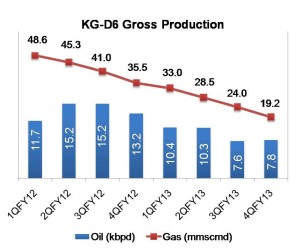Why is the Indian Power Sector Facing a Supply-Demand Gap?
In spite of a total installed power generation capacity of about 223 GW (as of April 2013), India is still struggling to meet increasing power demand. Government of India came up with the Electricity Act in the year 2003 to reform the unorganized power sector in India. EA-2003 has helped to improve efficiency and has brought some much needed order in the overall power sector. However, we are still facing severe power cuts and many regions in India are still lacking something as basic as an electricity connection. Recent structural reforms in the power sector will take some time for complete implementation. In the short to medium term, supply-demand mismatch and limited ability of the financial systems to support subsidies are expected to push consumer tariffs upward.
Following points explain the reasons behind low power generation and hence increasing Supply-Demand Gap;
- Electricity generation in India is predominantly based on coal. India has enough coal reserves in its forests areas. However, due to strict forest clearance regulations, this coal cannot be utilized very often for power generation.
- The quality of coal is not up to the grade which is considered best for power generation.
- Coal India Limited -a public sector company, is the major supplier of coal for power plants in India; hence it has a monopoly in the market. Growth in supply by Coal India has been muted due to multiple factors as discussed earlier i.e. forest clearance regulations, poor calorific value, etc. As shown in the graph above, CIL has almost the same coal production since five years. However, the demand has increased extensively.
- Frequent increase in price of imported coal is not fitting in the cost per unit structure as promised in PPA, resulting in restricted generation. Recently Indonesia has increased the price of coal in international market.
- Production of gas in the Krishna Godavari (KG–D6) basin has also dropped by more than 60% from two years ago. It has resulted in lower or no power generation from gas based power plants.
- Severe droughts/or less rainfall has contributed to less water level in dams which has resulted in less power generation from Hydro power plants.
Key issues faced are Quality of fuel supplied, Evacuation of extracted fuel, Weather (availability of water) and Allocation of limited fuel among sectors competing for the same.
 |
 |
Sources: 1. CIL, PIB, Business Standard, The Hindu, 2. Motilal Oswal Sector Update
Overall energy demand has been increasing at the rate of just under 7% per annum in the last seven years. Amongst the major consumers, demand of Tamil Nadu, Andhra Pradesh, Karnataka and Rajasthan has grown at a rate of close to 8.5%. Traditionally large demand base of Maharashtra and Uttar Pradesh has grown at a rate of close to 6.5%.
Power has significant growth multiplier effects. Better availability not only boosts immediate economic performance but also investment prospects and business optimism. Recent growth has taken place despite the difficult economic conditions – demand can be expected to show a positive boost in better conditions.

During the last decade, growth in energy demand has consistently outpaced growth in supply. This has resulted in a widening gap over the years leading to implementation of Restriction & Control measures in more and more states.
What is government of India doing?
MoP has proposed debt restructuring scheme for state owned utilities. 50% of outstanding short term liabilities will be taken up by the state governments. Discoms will issue bonds to lenders, backed by state government guarantee. Government will then take over the liabilities in a phased manner by issuing special securities in favour of participating lenders. Balance 50% will be rescheduled by lenders and serviced by discoms with moratorium of 3 years on the principle. Rs. 1.9 lakh crores of liabilities are to be covered under this scheme. Eight states accounting for 70% of the liabilities have given consent for the scheme. (Read more here)
The Ministry of New and Renewable Energy (MNRE) is encouraging growth in solar power installations under the auspices of the National Solar Mission. Close to 2,000 MW is expected to be installed by the end of current financial year. This capacity is expected to make an important contribution in mitigating peak (day time) power shortage. In addition, MNRE encourage other renewable energy generators with their subsidy and other relevant schemes.
What should consumers do?
The gap between supply and demand can be bridged only with structural reforms in the energy sector. These reforms will however take time to be implemented considering the numerous challenges involved. Consumers can mitigate these rises by taking pro-active measures. Energy efficiency, re-scheduling of operations to benefit from low off-peak tariffs and investment in renewable energy are immediate opportunities for mitigating increase in energy costs. Read our article on rooftop solar grid interactive power systems here
Important Note: This article is based on the monthly newsletter issued by Agneya Carbon Ventures Pvt Ltd. Agneya is a major consulting company in India working in the domain of Renewable energy, Carbon management and Sustainability.


